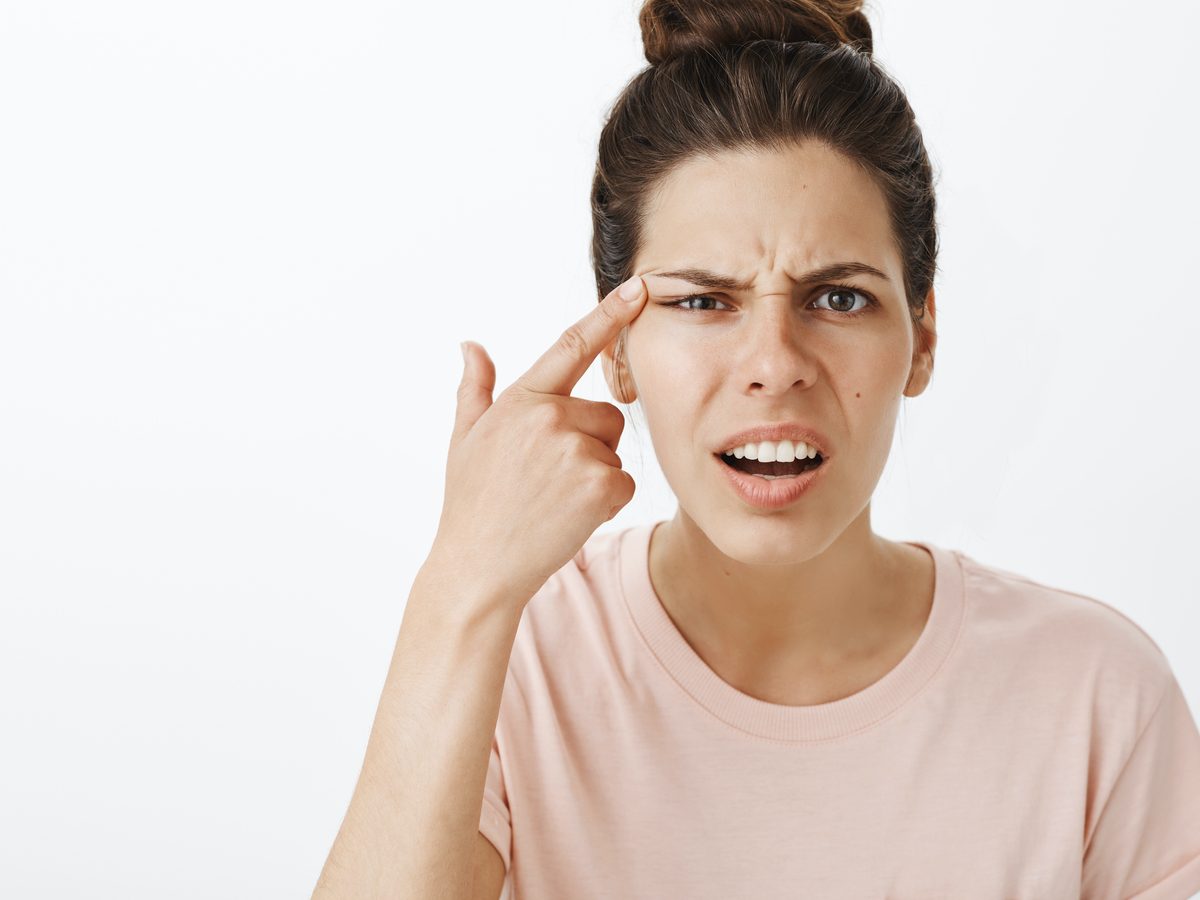
Twitching Eyelid
Don’t Worry:
You’re going about your day and suddenly your eyelid starts involuntarily twitching as if it’s dancing to its own beat. Not to worry—this quirky condition is called eyelid myokymia, and it affects almost all of us at some point. It’s thought to be caused by a misfiring of the motor nerves that drive the muscles that open and close your eyes, and an episode usually stops in a few seconds. “You can feel your eyelid twitching, but it’s so slight, another person can’t see it,” explains Dr. Colin Mann, immediate past president of the Canadian Ophthalmological Society. Common causes include too much caffeine or alcohol, and ongoing stress. So rest up and take it easy on the coffee and booze.
Do Worry:
If the twitching episodes persist beyond a few weeks, or if they involve stronger contractions that visibly close your lid, see your doctor. It could be a sign of Bell’s palsy, a temporary form of facial paralysis that affects one in 60 people, or an even rarer neurological disorder called benign essential blepharospasm, which can impair your vision and require medication or surgery.
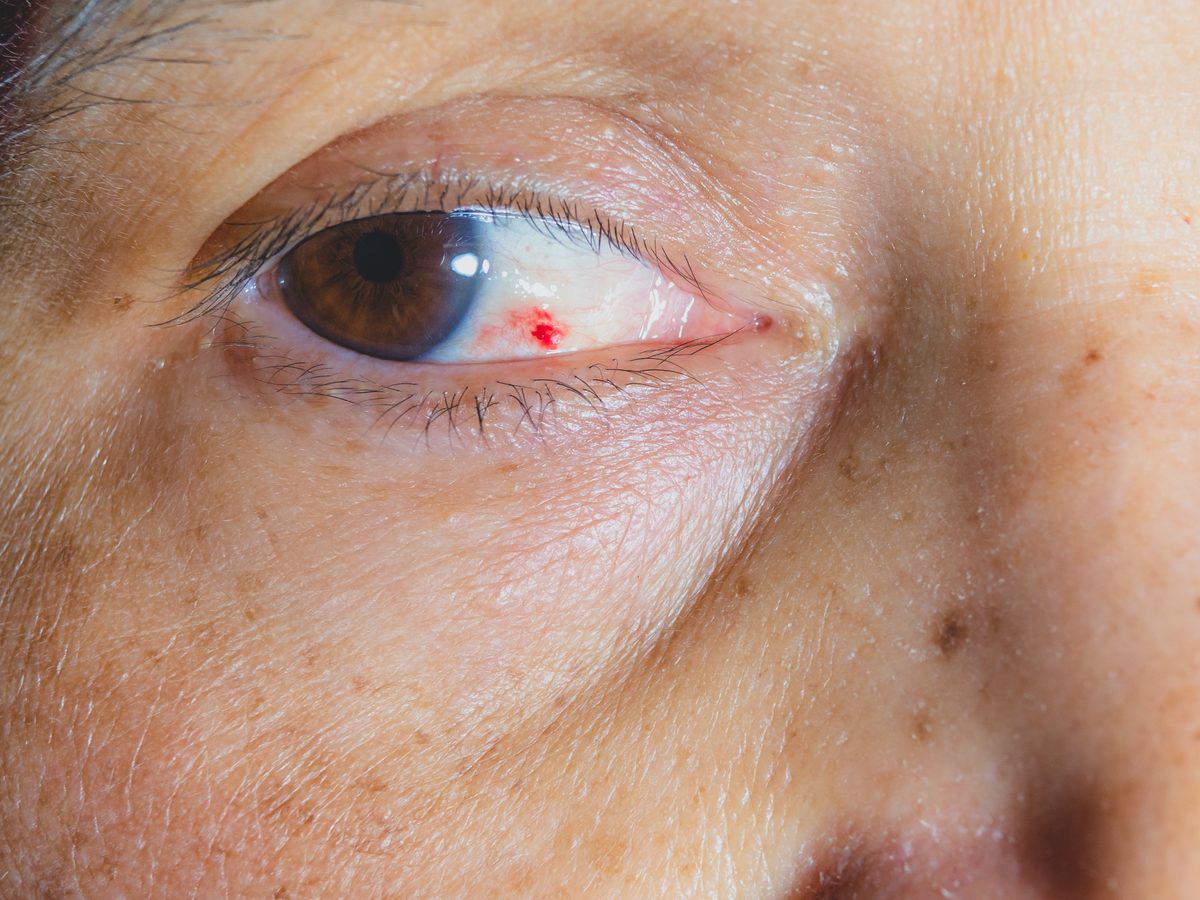
Red Spot in Your Eye
Don’t Worry:
Seemingly out of nowhere, there’s a dot of blood on the white of your eye. Luckily, this alarming symptom most often signals something harmless. A broken blood vessel—called a subconjunctival hemorrhage—can happen from coughing, sneezing or even straining too hard on the porcelain throne. Also, taking medications such as blood thinners can predispose you to it. Blood can then pool under the clear protective layer sitting over the white of your eye, and even spread all the way around. It usually resolves on its own after about two weeks.
Do Worry:
If you have a red spot, keep an eye out (no pun intended) for other symptoms. If it occurs on a regular basis, or if you’re having spontaneous bruising elsewhere, it could be a sign of something more serious—like a clotting disorder or diabetes.
Here’s the latest research on how to beat diabetes.
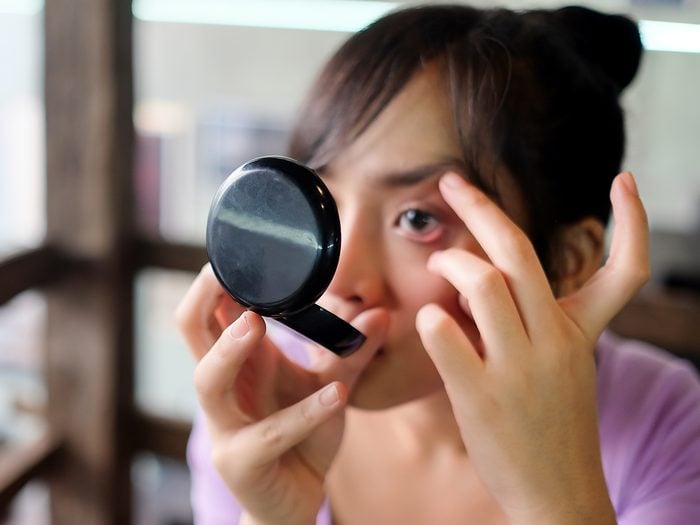
White Ring Around Your Cornea
Don’t Worry:
If you’ve noticed a ghostly pale ring around your cornea—the clear layer of protective tissue that covers your iris and pupil—it may just be a normal part of aging. As we get older, the edge between the cornea and the white of the eye becomes more porous, allowing fatty deposits from the bloodstream to leak in. Arcus senilis, as it’s called, doesn’t impair vision or require treatment.
Do Worry:
If you’re under 40, the white ring might be your first sign of high cholesterol—so better have your doctor run a blood lipid profile, which measures levels of cholesterol, triglycerides and other fats.
Find out how to maintain healthy eyes at every age.
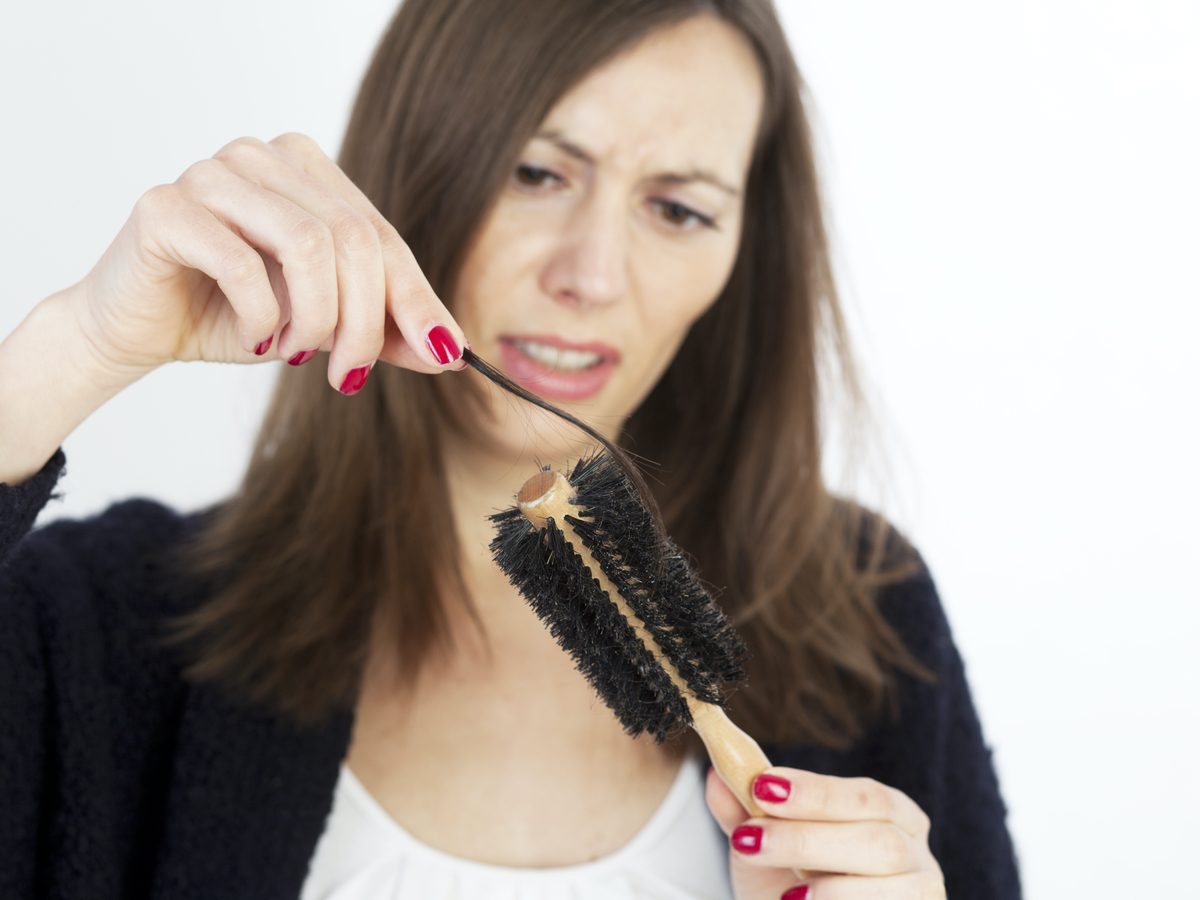
Hair Falling Out
Don’t Worry:
Each day, the average person loses 50 to 100 hairs from their scalp. Compared to the more than 100,000 hairs on your head, that isn’t much. But when you suddenly notice clumps in the shower drain, it’s considered abnormal hair loss and could have a number of mostly benign causes—including illness, surgery, stress, a high fever, a crash diet or hormonal shifts like childbirth and menopause.
For all of the above, time is the only cure, and it can take four to seven months to begin regaining your normal hair density.
Do Worry:
Hypothyroidism, or an underactive thyroid gland, can cause hair to become brittle and thin as the disease slows your metabolism, interrupting your hair’s growth cycle. If left untreated, hypothyroidism can cause complications like heart disease, but it can be managed with medication.
Find out how it’s actually possible to reverse heart disease.

Constant Headaches
Don’t Worry:
A headache is chronic if it occurs more than 15 days a month, for a minimum of three months—but it doesn’t take that long for them to become, well, a headache. Common triggers are dehydration, sleep deprivation, vision problems, sinus congestion, poor posture while working at a desk and hangovers—all of which have straightforward solutions.
Do Worry:
If you’ve ruled out all of the above, it’s worth a call to your doctor for more investigation, especially if you find yourself taking over-the-counter pain relievers more than twice a week. Ultimately, you may not discover the cause—this is true for many people who suffer from headaches—but medication, dietary changes and certain supplements can help.
Also, your health care provider should examine you for signs of stroke, cancer or brain injury, such as weakness on one side, unequal pupil sizes, and cognitive changes like confusion or memory loss.

Ringing in Your Ears
Don’t Worry:
What’s that annoying sound? Is that high-pitched droning, buzzing or whooshing sound coming from outside, or is it something inside your own head? Tinnitus is surprisingly common—43 percent of Canadians have experienced it at some point. It most often lasts a few minutes, hours or days, but sometimes it lasts forever. The most common cause is hearing loss, whether temporary—from a loud noise, for example—or permanent, as with aging (three-quarters of people over 70 have hearing loss to some degree).
Although it’s not a medical emergency, tinnitus can affect quality of life in the long term—Ludwig van Beethoven had it so bad in his 30s, he contemplated suicide. “It’s not a very well understood phenomenon,” says Dr. Vance Tran, a family physician in Pickering, Ontario, “but we think it has something to do with how we experience transmissions from a damaged auditory nervous system as sound.”
Have your primary care provider look inside your ears, as tinnitus can sometimes be caused by an obstruction, like earwax buildup. If the cause is age-related hearing loss, the good news is that it can be treated with a hearing aid.
Do Worry:
If the noise is rhythmic or pulsing, see your doctor right away. That can be a sign of narrowing in the carotid artery near your temple, which puts you at risk for stroke. Surgery may be needed to clear any blockages.
Learn to spot the signs of hearing loss that often go ignored.

Ache in Your Ear
Don’t Worry:
As any new parent can tell you, ear infections are the bane of early childhood. But an earache in an adult warrants closer investigation, since run-of-the-mill infections are less common. In fact, the culprit may not even be in your ears at all. Temporomandibular joint (TMJ) disorder, which causes inflammation or dislocation in the jaw joint, is often called a “great impostor” for the way it can mimic other health conditions—and more than 70 percent of people who suffer from it report ear symptoms, according to one 2019 Swedish study. If you have pain in one or both ears but don’t have a fever, discharge or other signs of infection, see a dentist and ask them to check for signs of tooth wear or any popping or clicking in your jaw. A mouth guard, Botox injections to relax the jaw muscles, or physiotherapy may help.
Do Worry:
More rarely, a complication from shingles called Ramsay Hunt syndrome can affect the facial nerve near one ear, causing painful blisters inside the ear canal, hearing loss and even facial paralysis. It’s diagnosed from a characteristic red rash on the affected side of the face, and treated with antiviral medications.
Make sure you never do this before a doctor’s appointment.

White Stuff on Your Tongue
Don’t Worry:
An icky-looking white coating on your tongue is most likely a sign of poor oral hygiene—it’s actually a mixture of bacteria, food debris and dead skin cells trapped between the little bumps on the tongue. “The simple solution is to brush your tongue daily or use a tongue scraper,” says Dr. Charles Frank, a dentist in Windsor, Ontario. Also, an overgrowth of yeast, called candidiasis or thrush, can happen when antibiotics, chemotherapy or diabetes kill off the healthy bacteria in your mouth—and can be treated with antifungal medication.
Do Worry:
Leukoplakia, characterized by thick white patches that can’t be scraped off, might be an early sign of oral cancer. Frank also suggests seeing your dentist if any unusual spot sticks around for more than a couple of weeks.

Metallic Taste in Your Mouth
Don’t Worry:
That rusty flavour is called dysgeusia, and it could be caused by taking lithium, certain blood pressure medications, cancer drugs or iron supplements. It’s not serious, but it can be unpleasant. If switching medications isn’t an option, over-the-counter mouthwash or gum can mask the taste.
Do Worry:
According to Dr. Charles Frank, a mild electrical current can occur if you’ve had fillings, crowns or implants done with more than one type of metal. Called oral galvanism, it’s not dangerous—but if it doesn’t go away it could be costly, as you’ll need to have your fillings changed.
Find out the signs of disease your teeth can reveal.

Bleeding Gums
Don’t Worry:
At some point in their lives, seven out of 10 Canadians will have gingivitis, which results from the buildup of plaque and tartar above the gumline. Even in mild cases it can cause occasional bleeding while brushing. Meticulous brushing—for two minutes twice a day—plus daily flossing and regular dental cleaning appointments can keep it at bay. (Make sure you’re avoiding these common flossing mistakes.)
Do Worry:
If you don’t take care of gingivitis, it turns into periodontitis, or gum disease, which can lead to tooth loss.
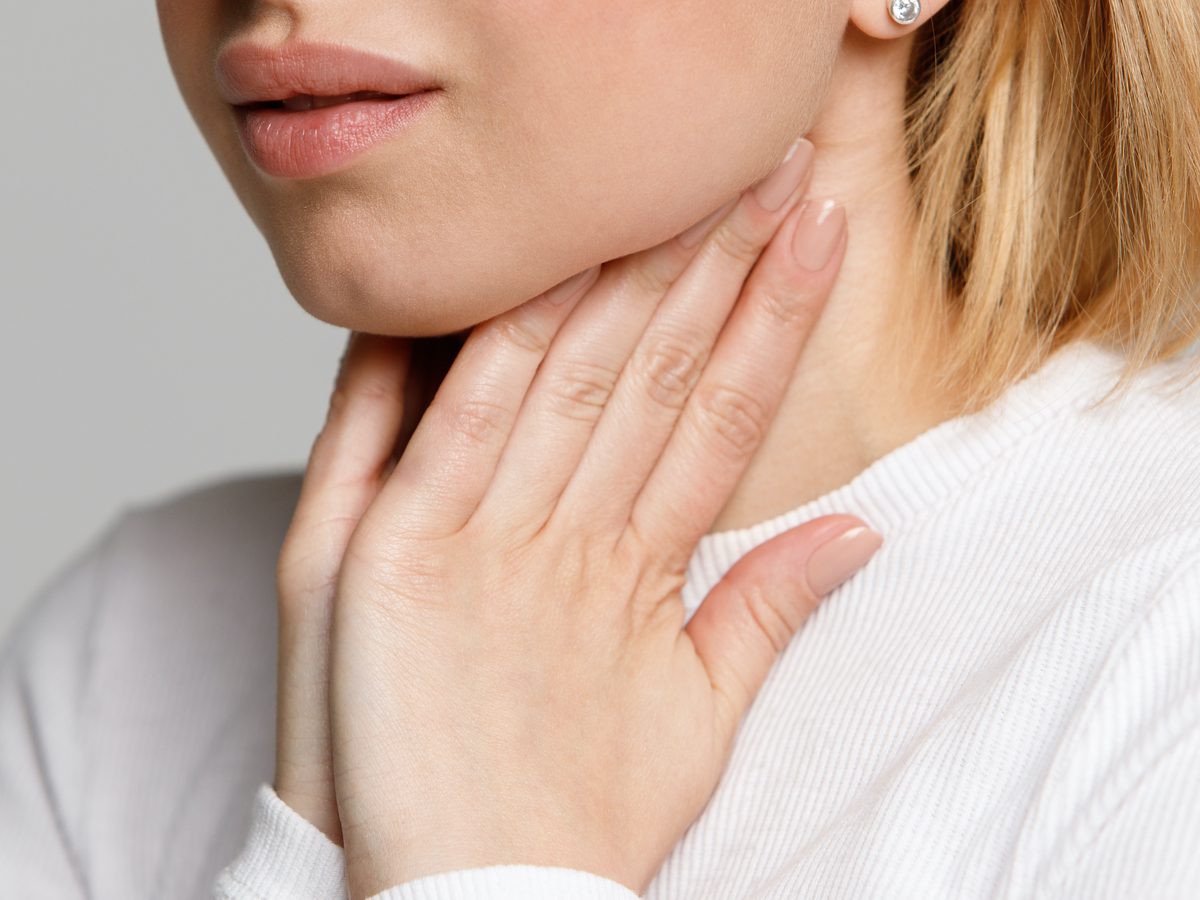
Lump Near Your Neck
Don’t Worry:
Spread out in a network, your lymph nodes are bean-shaped glands that play an important role in your immune system. When bacteria, viruses or other foreign substances invade your body, your lymph nodes can feel swollen and hard with all the white blood cells piling in to fight off the assault. Once you’re done battling whatever it was, they will go back to normal.
Do Worry:
If you feel the lump in the hollow above either collarbone—where your supraclavicular lymph nodes are—these can be important sentinels for disease in your abdomen. If it happens on your left side specifically, it’s called Troisier’s sign, and it’s considered an indication of cancer in the stomach or other organs, even if you have no other symptoms. See your doctor as soon as possible.
Brush up on the latest breakthroughs in cancer research.
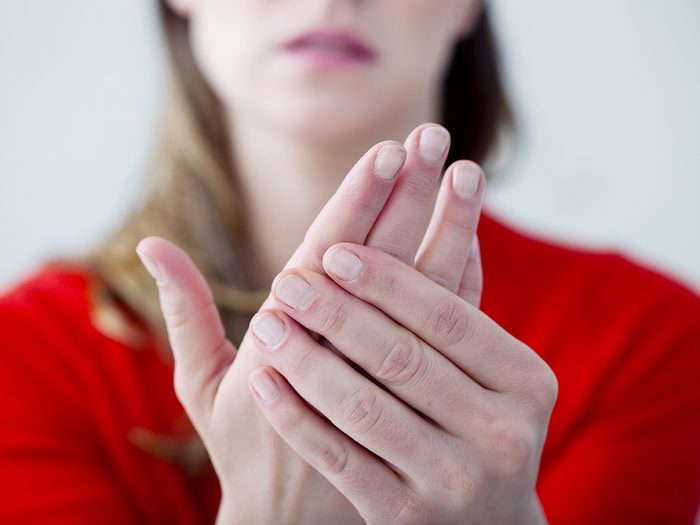
Cold Hands
Don’t Worry:
Genetics can be the reason you often have cold hands, even in summer—research shows it runs in families. The elderly, who tend to have slower circulation, as well as very thin people without much insulation, can also feel more sensitive to cold, especially in the extremities. Avoiding nicotine and caffeine, which restrict blood vessels, and dressing in layers to keep your core temperature up can help.
Do Worry:
Raynaud’s phenomenon, which affects 10 percent of the population, is a vascular abnormality characterized by attacks of cold, pain, tingling or burning, and white or bluish colour in the fingers. It can be managed with medication, but in some cases, Raynaud’s can be a sign of an autoimmune disease called scleroderma.
Anemia, caused by low iron levels, can also make your hands and feet feel cold, and is also linked to fatigue, dizziness and chest pains. Iron supplements can help restore your hemoglobin levels.
Here are 12 iron-rich foods worth adding to your cart.
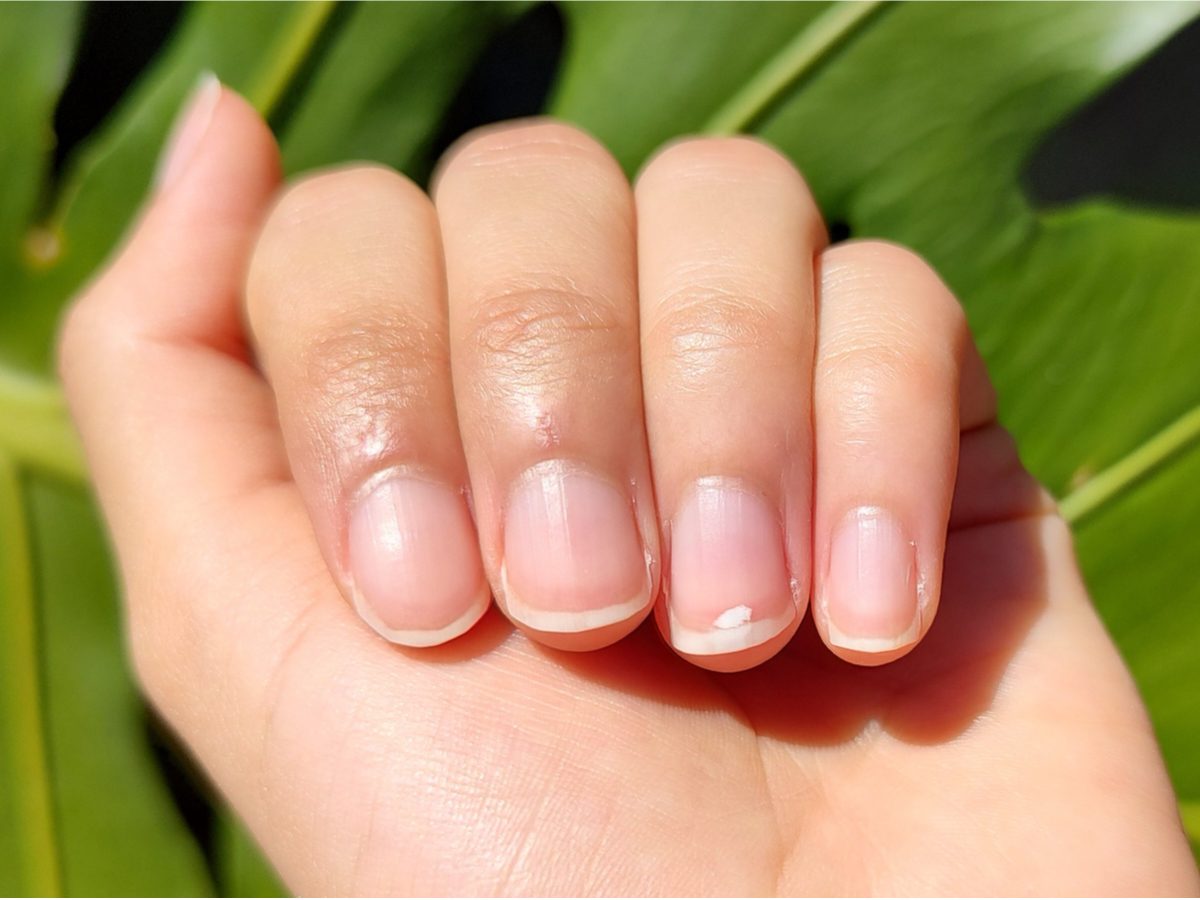
White Marks on Your Nails
Don’t Worry:
Nails can reveal some important things about your health. Those mysterious dots or lines on your fingernails—called leukonychia—are usually caused by bumping or pinching the skin under your cuticle where your nails start to grow. They’re usually harmless and take six to nine months to grow out completely. If a spot looks yellowish and you can see thickening of the nail, that could indicate a fungal infection that requires a topical prescription.
Do Worry:
If the bands are vertical and dark-coloured, see your doctor as soon as possible. “In a fair-skinned person, these can indicate subungual melanoma, a rare form of skin cancer under the nail,” says Tran. Darker-skinned people do get bands like this normally as they age, but if you notice new stripes or a change in their thickness, it warrants further investigation for melanoma.

Chronic Bloating
Don’t Worry:
If you feel like a hot air balloon float after every meal, you’re in good company—nearly 40 percent of the population struggles with gas and bloating. A food journal may help pinpoint specific dietary triggers, such as broccoli, beans or fruit. It’s important to note, though, that it’s normal for bellies to change shape over the course of the day, and passing gas (from the northern or southern route) up to 20 times daily is just part of the way your digestive system efficiently turns food into fuel. (Here’s what your burps can reveal about your health.)
Do Worry:
If your bloating never goes away or is accompanied by other symptoms such as severe cramps, changes in bowel habits, blood in your stool, nausea, decreased appetite or unintentional weight loss, see your doctor—diagnosing irritable bowel syndrome, inflammatory bowel disease, Celiac disease, Crohn’s disease, diverticulitis, ulcerative colitis, colon cancer and other conditions can require a more thorough workup.

Change in Your Stool
Don’t Worry:
When it comes to bowel output, what’s “regular” for each person varies widely—anything from twice a week to three times a day is in the range of normal, as is a range of consistencies. A change in diet, medications such as antibiotics, stress or dehydration can temporarily knock your routine out of whack, but things usually resolve within a few days.
Do Worry:
“Any persistent change in your pattern lasting more than a month is a sign to call to your doctor,” says Tran. Irritable bowel syndrome (IBS)—characterized by diarrhea, constipation or both, along with cramps that are relieved by pooping—affects up to 18 percent of Canadian adults, and is thought to be linked to an imbalance in the relationship between the brain and the gut. Antidepressant medications have shown some promise as treatment. But your doctor will also want to rule out thyroid issues, bacterial or parasitic infections, and other more serious gut-related diseases.

Weird Smelling Pee
Don’t Worry:
Certain foods, notoriously asparagus, can give your urine a distinctly funky tang. But stinky pee can have a bouquet of other possible causes, including those new vitamins or medications you’ve been taking. B1 is known for giving urine a distinctly fishy odour, while sulfonamide antibiotics can impart a rotten-egg smell. An ammonia smell in your urine could mean you’re dehydrated and need to drink more water during the day—or, if attended with burning, fever or chills, might be an early sign of a urinary tract infection.
Do Worry:
Poorly controlled diabetes can make urine smell fruity from the ketones. If you’re diabetic and also experiencing nausea, confusion or excessive thirst, get medical attention immediately—you may be suffering from ketone acidosis, a potentially life-threatening condition.

Joint Popping or Clicking
Don’t Worry:
That snap, crackle or pop you hear when you stand up, walk down stairs or stretch is called crepitus, and it doesn’t necessarily mean you’re decrepit. It’s either caused by gas bubbles forming in the fluid that surrounds and lubricates the joints, or the sound of a tightly strung tendon snapping as it slides over a bony surface. Either way, if the noise is painless, it’s nothing to worry about (and becomes more common as we age, especially in the knees).
Do Worry:
If the cracking hurts or the noise changes to a crunching sound, see your doctor—as arthritis progresses, the breakdown of cartilage can lead to bones grinding against one another. Your doctor will first recommend exercise therapies to support and stabilize the joint, and if necessary prescribe medications for pain and inflammation relief.

Swollen Knee
Don’t Worry:
Prepatellar bursitis, which most commonly affects gardeners or anyone whose occupation involves a lot of kneeling, is caused by inflammation in the bursa, or fluid pouch, on the front of your kneecap. If you notice one knee is noticeably more swollen than the other, tender to the touch and painful to extend, try treating it with rest, ice and a non-steroidal anti-inflammatory (NSAID) medication like ibuprofen.
Do Worry:
If the symptom doesn’t abate, if the knee feels warm or if more than one joint is swollen, have your doctor check for arthritis.
Discover how weather affects joint pain.
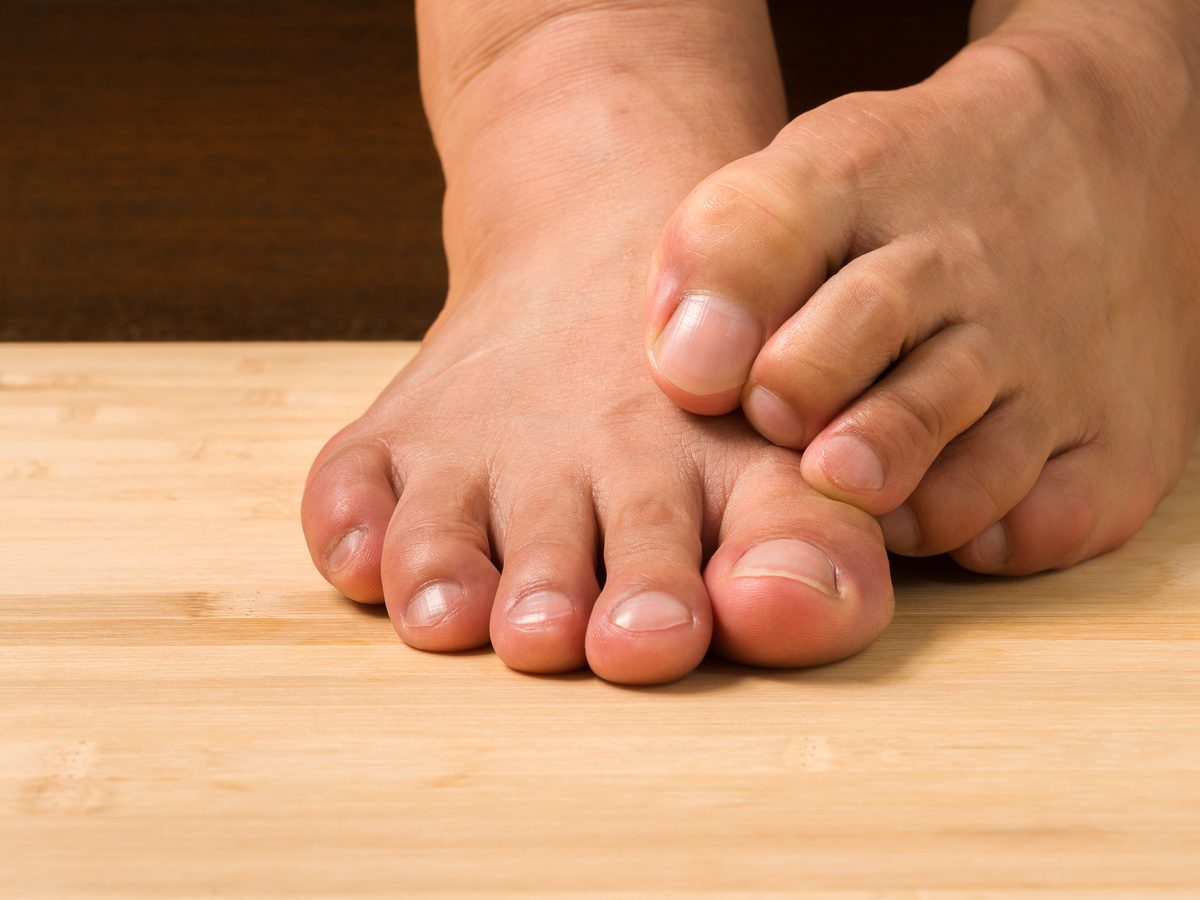
Enlarged, Sore Big Toe
Don’t Worry:
Your body’s underappreciated workhorse is the last part of your foot to push off the ground with every stride, and bears 40 to 60 percent of the force load. You may not think about your big toe much, but when something goes wrong with it, you’ll wince with every step. Ingrown toenails are a common cause, accounting for one in five foot complaints to family doctors. A mild case can be treated by soaking the toe and applying antibiotic cream.
Do Worry:
A lesser-known form of osteoarthritis—hallux rigidus—affects 2.5 percent of people over 50, and causes inflammation, swelling and aching in the joint connecting your big toe to your foot. Over time, the bone overgrowth caused by the condition can make it almost impossible to bend your big toe, and lead to protruding bone spurs.
The resulting joint degeneration can’t be reversed, but symptoms can be managed with NSAID medications, custom-made orthotic insoles, physiotherapy, specialized shoes or even joint replacement surgery.
You should also ask your doctor to check for gout, a rare form of arthritis caused by excess uric acid crystals in the blood.
Here are 10 signs of disease your feet can reveal.

Jaw Pain
Don’t Worry:
Aching in your jaw, pain while chewing, and a locking or popping sensation when you open your mouth wide can be signs of temporomandibular joint (TMJ) disorder, which can dislocate your jaw joint and inflame the muscles and ligaments that control its movement. Bruxism, or grinding your teeth, is a common cause, and many people aren’t aware that they clench or grind their teeth at night. “Waking up with a headache is a telltale sign of bruxism,” says Frank. “A dentist can prescribe a splint that covers the surface of your teeth, so you’re punishing the plastic instead of wearing down your tooth surface.”
Do Worry:
More rarely, jaw pain on one side can result from a cyst or a tumour, which your dentist can see on an X-ray. If the pain is only on the left side and radiates up your neck to your jaw, go to the ER right away—it could be an uncommon sign of a heart attack.